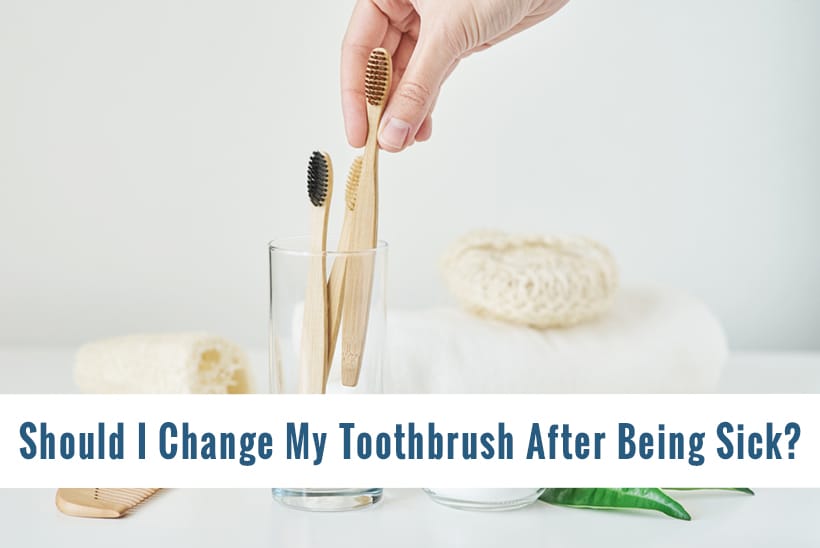 We’ve all struggled with sickness enough to know that it’s not fun. Chances are you’ve heard your fair share of “do this and not that” when it comes to sickness and staying healthy.
We’ve all struggled with sickness enough to know that it’s not fun. Chances are you’ve heard your fair share of “do this and not that” when it comes to sickness and staying healthy.
Perhaps you’ve been told to Immediately wash the sheets, disinfect the house, clean the bathrooms, and throw away your toothbrush. Throwing out the toothbrush seems to be at the top of the list for eliminating further germ spreading and sickness.
Some of these things can have their place in reducing sickness, but many wonder if throwing out the toothbrush after being sick is necessary? Check out what dentists are answering when you ask, “Should I change my toothbrush after being sick?”
Why You Shouldn’t Worry About Germs Lingering On Your Toothbrush
It can be easy to see how one would want to get a new toothbrush after having a sickness. After all, no one wants to be reinfected again. Fortunately, sickness doesn’t work this way because we each have an immune system that works to build up antibodies.
When we’re sick, our body builds up antibodies to the germs that made us sick. When these bacteria reintroduce themselves, such as on our toothbrushes, these antibodies go to work and attack. The antibodies stick with us and continue to fight so we won’t become sick a second time around by the germs lingering on our toothbrushes.
With our immune systems’ help, many dentists don’t see a need to replace your toothbrush following sickness unless your toothbrush is already 3 or 4 months old and due for a replacement.
Other Considerations
As with most things in life, guidelines and recommendations aren’t always black and white. When deciding whether or not to replace your toothbrush after sickness, it is also good to consider whether your family members keep their toothbrushes in the same holder.
If this is the case for your family, then you may want to err on the side of caution by moving along and getting everyone in your family a new toothbrush. While you have built up the antibodies to keep you from getting sick again, others in your family may not have the antibodies. Thus, they are still at risk of getting sick.
What Should You Do?
In most situations, we don’t think it’s necessary to change your toothbrush after being sick, but there are some helpful recommendations that we have for keeping your toothbrush as germ-free as possible:
Never share your toothbrush or toothpaste with other people. Providing each family member with their own toothbrush and toothpaste will eliminate spreading germs to one another.
Rinse your toothbrush with water after using it. Rinsing your toothbrush out with cold water after use will help to remove toothpaste, debris, and bacteria that may be hiding in the bristles.
Don’t soak your toothbrush in water or mouthwash between uses. The Center for Disease Control has shown that soaking your toothbrush in between services can lead to the spread of germs and disease.
Let your toothbrush air dry. Do not cover your toothbrush in between uses. Covering a wet toothbrush will create a moist environment that allows bacteria to grow more rapidly.
Switch out your toothbrush every 3-4 months. Regularly switching out your toothbrush will keep the toothbrush working as efficiently as possible, and this will help keep your mouth healthy and the germs under control. We don’t recommend keeping a toothbrush for more than four months because it is not very sanitary.
Keep up with routine dental cleanings. One of the best ways to keep germs at bay is through good home care and regular dental cleanings. Having routine dental cleanings will keep your mouth healthy as well as benefit your overall health.
Unfortunately, we can’t completely stop all bacteria and viruses from invading our homes. But under normal circumstances, our bodies do an excellent job of protecting us from illness. Having good oral hygiene helps even more.
So follow our tips for a beautiful smile and a healthy body.



Leave a Reply